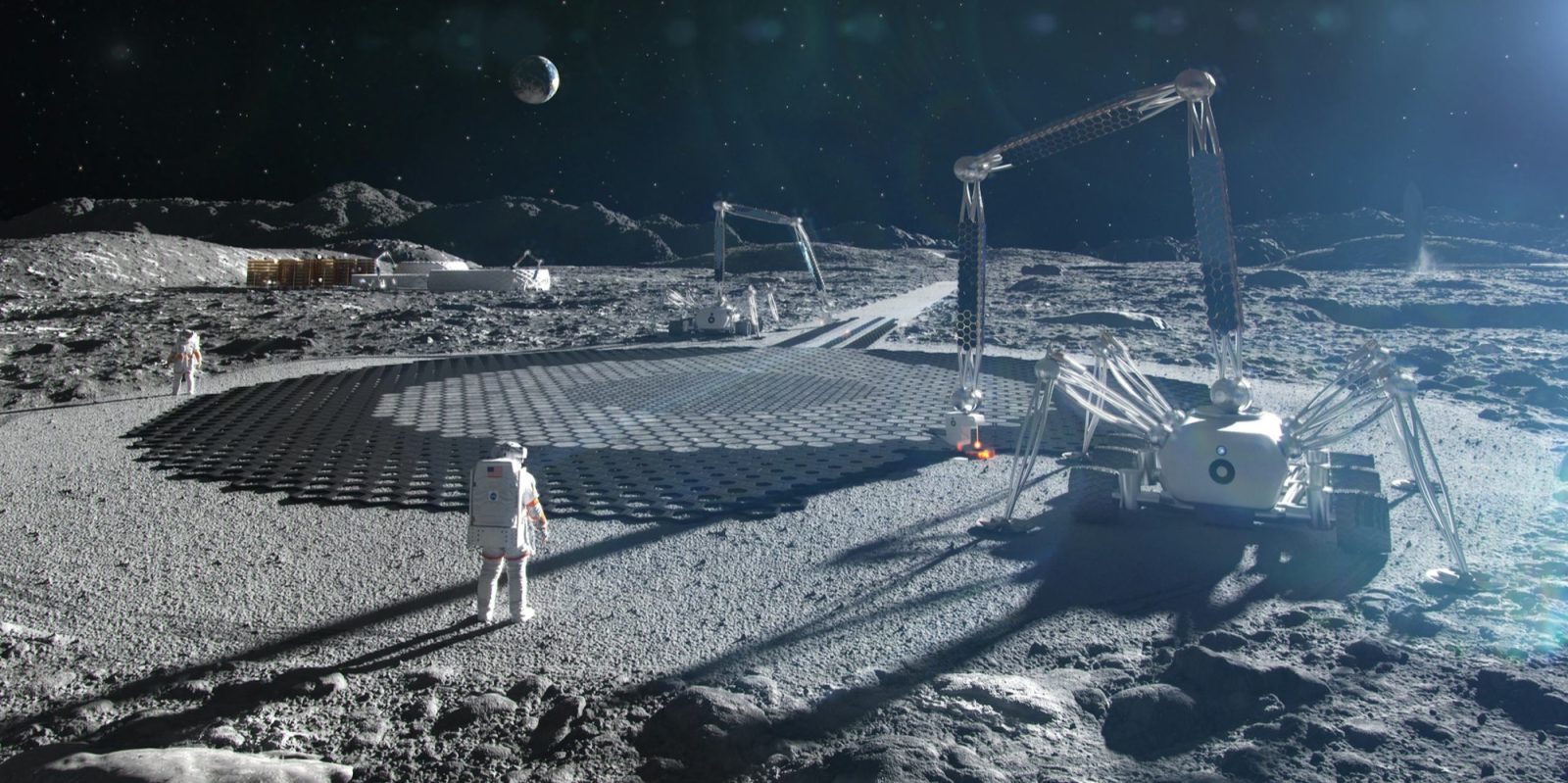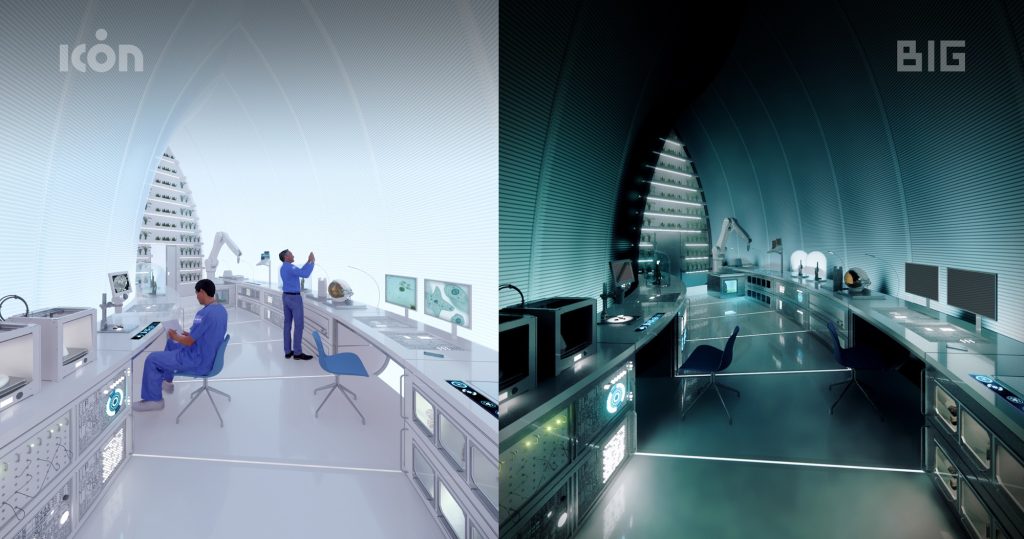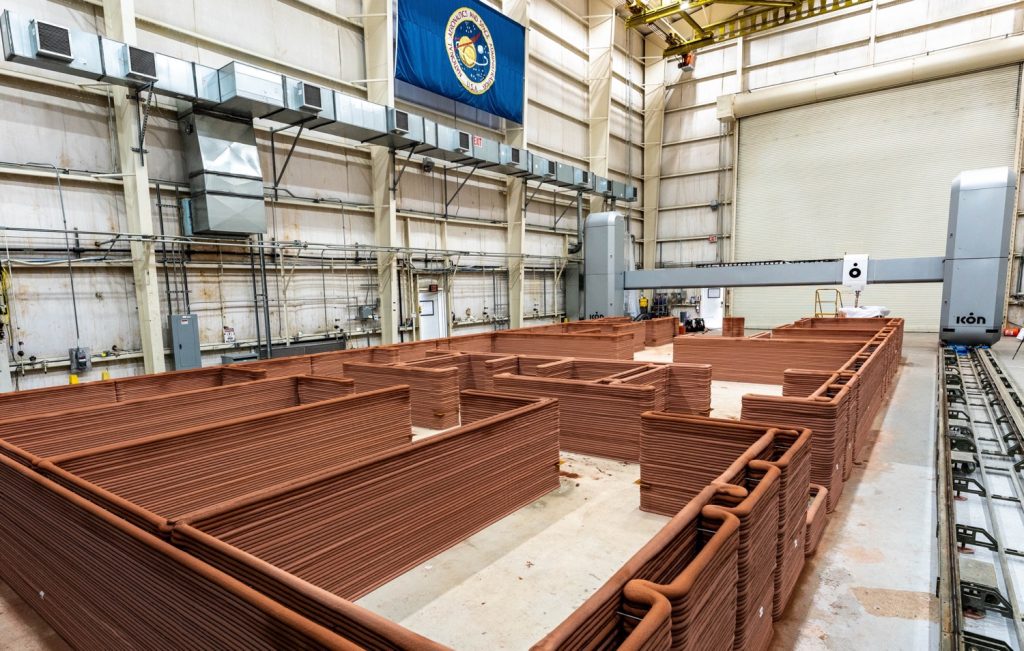
This week, a significant event is unfolding as leading figures in space architecture gather in Milan. The aim is to formally establish space architecture as a discipline. Interest in space-related architecture has been growing rapidly in recent years, as developments in off-Earth construction methods, zero-gravity design, and academic programs dedicated to this field have gained traction.
Notable architecture firms such as BIG (Bjarke Ingels Group) and SOM (Skidmore, Owings & Merrill) have entered the conversation, while specialist firms like SAGA, the Aurelia Institute, and 3D-printing company ICON have emerged with space-focused innovations.
Changes in space travel costs
Recent advancements have contributed to a decrease in the cost of space travel. When NASA‘ space shuttles were decommissioned, sending materials and humans into space was costly. However, developments such as SpaceX’s Falcon 9 and Starship have begun to lower these costs.
Some industry observers suggest this reduction could allow for broader possibilities regarding the types of materials and equipment that could be sent into space, leading to greater flexibility in space design. Space travel may now be at a pivotal point, comparable to the mid-20th century transformation of aviation when air travel shifted from being a luxury to an accessible mode of transportation.
NASA’s Artemis program has also shifted the focus back to the Moon. The Artemis initiative is exploring ways to return humans to the lunar surface and is expected to lay the groundwork for the eventual establishment of a permanent base there within the next few decades. A lunar base could serve as a platform for scientific research, similar to how research stations operate in extreme environments like Antarctica.
Challenges for space architects
Architects working in space face challenges not typically encountered on Earth. Designing for lunar environments requires consideration of both psychological and physical needs. Space is limited, and everything sent must be carefully selected and designed to fit within the confines of a spacecraft.
SAGA, a Danish design-build firm, has created a compact training habitat for the European Space Agency, incorporating sleeping capsules, a work area, and a communal space, all within a small footprint. The design reflects the need to balance human comfort with efficient use of space and resources.

Aurelia Institute is also working on solutions that address space constraints. The institute is developing modular panels that can form larger structures once deployed in space, providing astronauts with more comfortable environments compared to traditional spacecraft interiors.
ICON is collaborating with BIG to focus on robotic construction. Their Project Olympus aims to deploy 3D-printing robots to the Moon. These could create landing pads, storage units, and habitable structures using lunar materials, reducing the need to send building materials from Earth.
3D-printed habitats and autonomous construction
One of the more promising technologies being explored is the use of 3D printing to construct space habitats. ICON and BIG are developing systems that rely on lunar dust as a base material for constructing printable structures.
Some observers believe that this approach could significantly reduce the amount of material that needs to be launched from Earth. Robots, rather than humans, would perform the labor-intensive tasks of building these habitats, reducing risks associated with human exposure to lunar radiation and extreme temperatures.

Autonomous construction systems are also being developed to meet the challenges of building in space. This method could allow for the creation of shelters, infrastructure, and other essential structures without requiring human intervention.
Robots may be able to handle complex construction tasks that are difficult or dangerous for humans to perform, such as 3D printing walls that can protect astronauts from space radiation.
Human-centered design in space
Some experts in the field suggest a shift is needed in the design of space habitats to better accommodate the needs of long-term inhabitants. The current International Space Station, designed primarily as a microgravity science lab, may not offer the level of comfort required for long-duration missions or for non-career astronauts.
Space architects are increasingly looking at how to design space habitats that prioritize human comfort and livability, especially as space missions become longer and more civilians may be involved.
Testing of these new space construction methods is ongoing. For example, BIG and ICON recently completed a year-long experiment where a crew lived inside a 3D-printed Mars habitat prototype.

Experiences like these, along with research on extreme environments, are informing future designs. Zero-gravity test flights and data from astronauts who have spent time in space are also proving to be valuable resources in designing more human-centered space environments.
Looking ahead
As space architecture develops, members of the American Institute of Aeronautics and Astronautics are convening in Milan to discuss the future of the field. The group intends to establish goals for the next decade and explore the possibility of creating standards for space architecture. Although space architects are still working through the early stages of this discipline, there are growing discussions about its potential to become a licensed profession.
With the increased interest in returning to the Moon and the ongoing development of technology to support this endeavor, there are many open questions about how future space habitats will be designed and constructed. As architects and engineers continue their work, new innovations in autonomous construction, 3D printing, and human-centered design are expected to play key roles in shaping humanity’s next steps in space exploration.
FTC: We use income earning auto affiliate links. More.




Comments